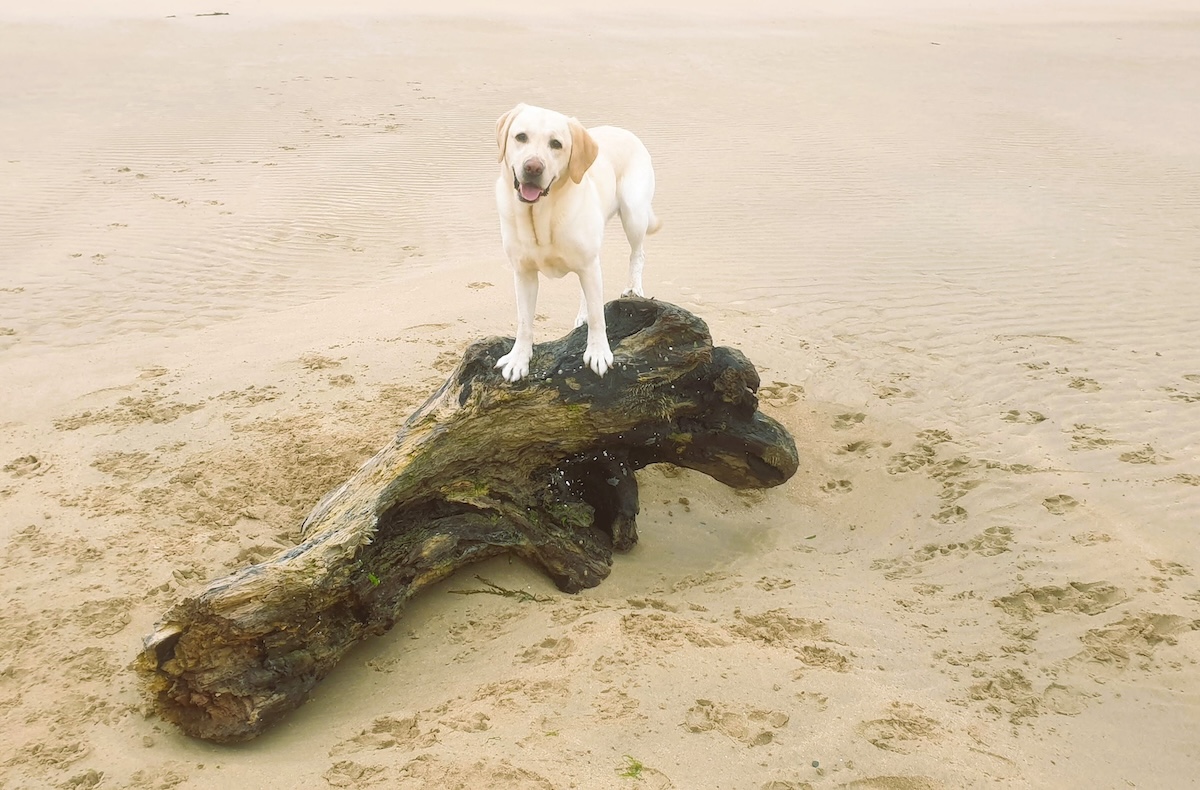Many people know or are related to people who are autistic. When children are diagnosed at an earlier age, they benefit from early intervention to improve their quality of life.
But is it possible for dogs to have it too? Dogs can be diagnosed with a parallel condition to autism spectrum disorder (ASD) based on behavioral characteristics-Canine Dysfunctional Behavior, CDB.
Let’s look at how humans and dogs with autism have similarities, as well as what the differences are.
What Exactly Is Autism?
Let’s first define the condition. Autism is primarily referred to as autism spectrum disorder (ASD) because it encompasses a wide range of behaviors. These include problems with communication, repetitive behaviors, and challenges with social skills. It’s a developmental disorder that affects the brain, and it’s thought that worldwide, one in 100 children has autism.1
Since autism is so varied, each person with ASD has a distinct set of challenges and strengths. Those who are diagnosed at ASD level 1 only require minimal support. At level 2, they need substantial support, and at level 3, substantial support is required.
ASD affects how people learn, problem solve, and think, and it can also include medical problems like seizures and GI disorders. There may be issues with mental health, such as depression, anxiety, and problems paying attention (many people with autism also have ADHD). Sensory issues are common, which is when people are sensitive to certain sounds, smells, textures, tastes, and sights.
There are definitive similarities among people with autism, but each individual is unique in their own right.
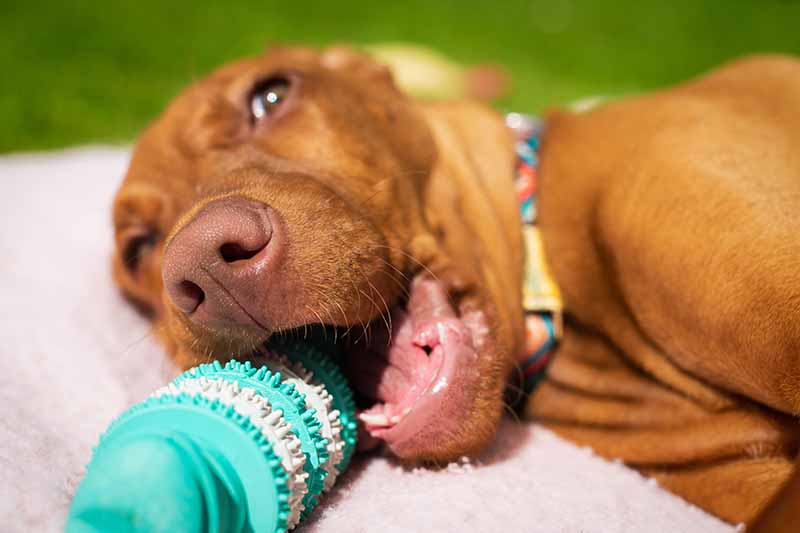
Can Dogs Have Autism?
Just like humans, dogs also can exhibit a range of behaviors, such as hyperactivity and social withdrawal.
When dogs have autism, it’s called canine dysfunctional behavior (CDB). Researchers aren’t sure what the cause is, but it appears to be congenital, which means dogs are born with it.
There are specific neurons that the dog’s brain lacks, which are supposed to help them learn how to socialize in an appropriate way. These missing neurons are called “mirror” neurons, which help puppies mirror the behaviors of older dogs while in social situations.
Without being able to understand and develop the appropriate social skills, the dog can be socially anxious.
What Research Has Been Done on Dogs With CDB?
In 1966, veterinarians discovered CDB, which they felt resembled a human infant with autism. Another study in 2011 found that Bull Terriers chasing their tails was not necessarily compulsive behavior, but a sign of repetitive behavior commonly seen in ASD individuals.2
This 2011 study was followed by a 2014 study that also studied tail-chasing behavior in Bull Terriers and found that the tail-chasing dog’s behavior paralleled with ASD.3
- Be mostly male
- Be unable to handle stress
- Have difficulties with social interactions
- Have difficulties communicating
- Have learning disabilities
- Exhibit repetitive behavior
- Fixate on certain objects
- Participate in self-injury
- Exhibited trancing
Anyone familiar with ASD will recognize these signs. The owners of a few of these Bull Terriers also reported that their dogs were “socially withdrawn,” and some even used the word “autistic” when discussing their dogs.
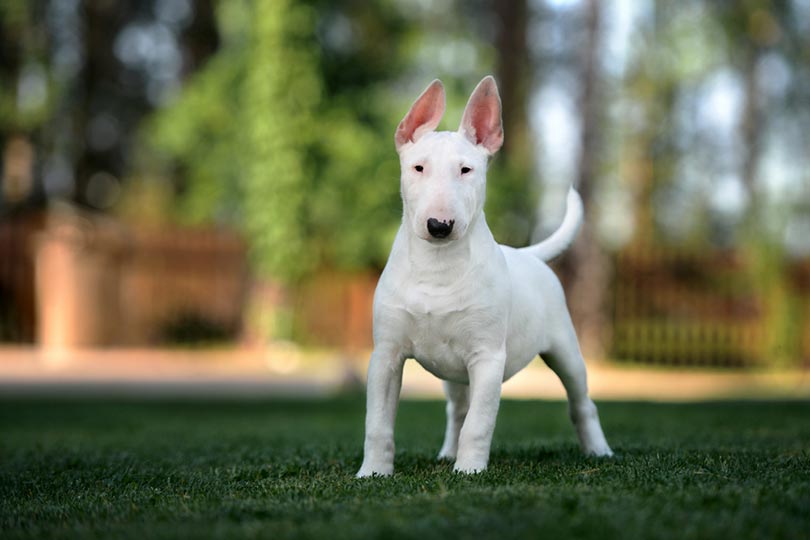
Signs of Canine Dysfunctional Behavior
The following are the signs of CDB.
1. Obsessive Compulsive Behaviors
In dogs, obsessive-compulsive behaviors include things like obsessive tail-chasing, circling, teeth grinding, or chewing. There have even been instances where dogs line up objects, such as toys.
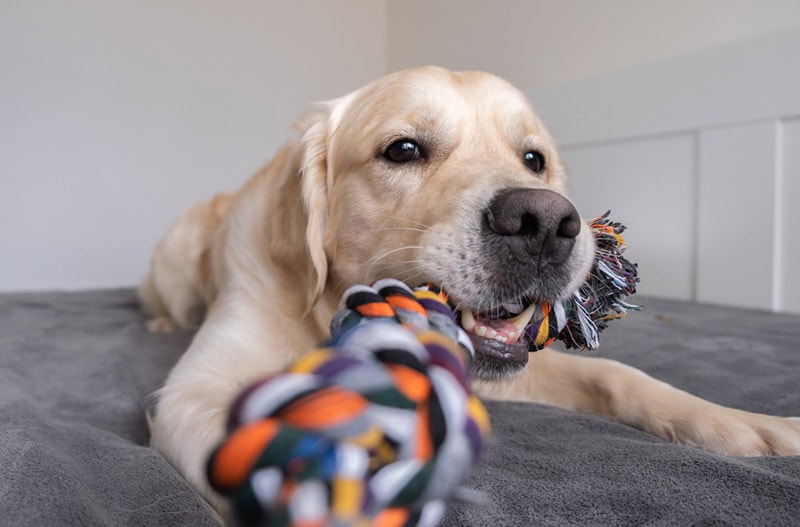
Dogs with CDB won’t pay attention to you even while playing, feeding, or walking them. Some dogs won’t want to interact with other dogs.
3. Issues with communication
Dogs with CDB aren’t always able to show their mood or emotions as easily as other dogs. An example of this is a dog that doesn’t wag their tail even when happy.
There have also been cases of dogs staring off into space, like being in a trance, for long periods. They also tend to be quieter than other dogs and tend to avoid eye contact, and they don’t necessarily have a distinct personality.

4. Disinterest in physical activity
Some of these dogs lack an interest in exercise, such as playtime with other dogs and humans. It’s more noticeable in breeds that are known to be high-energy but tend to be sedentary most of the time.
5. Inappropriate reactions to stimuli
These can be things like a dog reacting to a gentle touch with yelping and being seemingly hypersensitive to activities such as gentle petting. They react as though they are in pain and will show fear or aggression in response. They can also be quite sensitive to sudden sounds.

6. Avoidance of new situations or environment
When these dogs encounter something new or are in a new environment, they will retreat to a safe space, like under a bed or in a closet, if they are able.
How Do You Get a Diagnosis for Your Dog?
You should speak to your vet if you suspect that your dog might have CDB. It can be difficult to diagnose, so you should attend the appointment prepared.
Try a diary of sorts, and list all the unusual behaviors that you’ve observed. Taking videos of your dog when they are exhibiting these behaviors could be quite helpful.
Your vet might run behavioral tests to help determine a diagnosis and will give you a few ideas on how to help your dog. For example, if your dog is fearful of new people and other dogs, you can avoid dog parks and only walk them in quieter areas and less crowded areas. If your dog is having trouble with repetitive behaviors, you can try redirecting them, like taking them for a walk or playing with their favorite toy.
There isn’t a cure, but there are things that you can do to help your dog manage the more challenging triggers and behaviors.
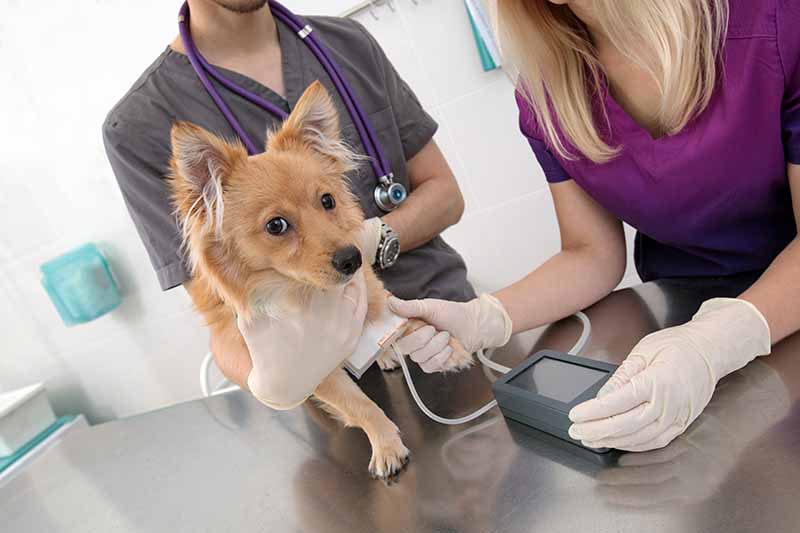
How Is Canine Dysfunctional Behavior Treated in Dogs?
Don’t attempt to treat your dog yourself without getting an official diagnosis from your vet. Your vet will likely talk to you about treatment options, which will also depend on your dog’s issues.
Medication
There isn’t a particular medicine that will treat CDB as a whole. But it can help treat specific aspects, such as compulsive behaviors. There are prescriptions that will treat OCD and help prevent aggressive behaviors and any anxiety issues.
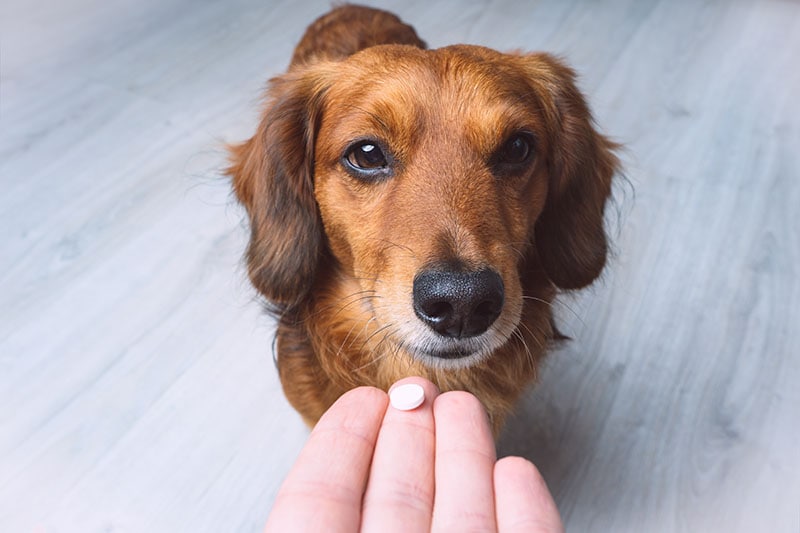
Regular Exercise
Keeping a consistent routine is important for dogs with CDB, and taking several walks a day should be a part of this routine. This can help reduce some of their stress and anxiety and can redirect compulsive behaviors while keeping them physically fit.
Secure & Safe Space
Since CDB dogs are easily stressed, they must have a quiet and secure space. If you have visitors over, ensure that your dog has a crate or bed that makes them feel safe.
Some of these dogs are also sensitive to things like sounds and light, so offer a covered bed, or ensure that their safe space isn’t overly bright and noisy.

Respecting Your Dog’s Needs
If your dog doesn’t like meeting new people or new dogs, never put them into an uncomfortable situation. If your dog doesn’t like being petted, don’t force it on your dog. Try to avoid situations that you know will stress out your dog.
Positive Reinforcement
Plenty of patience is required, and working with your veterinarian and any behaviorists and trainers can really help both you and your dog. Just ensure that anyone you work with is experienced in helping dogs with behavioral issues.

FAQ
Are There Any Other Conditions That Are Similar to Autism?
There are a few conditions that can look like autism.
- Canine anxiety: Anxiety in dogs can manifest as compulsive behaviors, hypersensitivity to touch and sound, and avoiding eye contact and play.
- Canine hypothyroidism: Hypothyroidism can cause extreme lethargy, which might also make the dog seem aloof.
- Neurological disease: This can include encephalitis and brain tumors, in which dogs stare off into space, obsessively circle, and sometimes exhibit chewing behaviors.
What Is the Difference Between Autism in Humans & Canine Dysfunctional Behavior?
CDB doesn’t have quite the range or spectrum as human ASD. Therefore, vets need to use comparisons of normal versus abnormal behavior.
When dogs start to show compulsive and repetitive behaviors in addition to inappropriate social interactions, the vet will use these signs to make a diagnosis.

Can Dogs Have ADHD?
Yes, they can. A 2021 study from the University of Helsinki found that certain breeds, like the German Shepherd and Border Collie, were more likely to suffer from impulsivity and hyperactivity.
Summary
Owning a dog with CBD will be quite a journey for you both. More studies need to be done in order to understand this disorder. But working with your vet and a behaviorist should make things a bit easier.
Understanding your dog and what triggers them is essential for making you both comfortable and respecting your dog’s triggers is crucial.
With the proper knowledge and care, it’s possible for your dog to lead a happy and healthy life.
Featured Image Credit: Elayne Massaini, Shutterstock
Contents
- What Exactly Is Autism?
- Can Dogs Have Autism?
- What Research Has Been Done on Dogs With CDB?
- Signs of Canine Dysfunctional Behavior
- 1. Obsessive Compulsive Behaviors
- 2. Antisocial behavior
- 3. Issues with communication
- 4. Disinterest in physical activity
- 5. Inappropriate reactions to stimuli
- 6. Avoidance of new situations or environment
- How Do You Get a Diagnosis for Your Dog?
- How Is Canine Dysfunctional Behavior Treated in Dogs?
- FAQ
- Are There Any Other Conditions That Are Similar to Autism?
- What Is the Difference Between Autism in Humans & Canine Dysfunctional Behavior?
- Can Dogs Have ADHD?
- Summary









